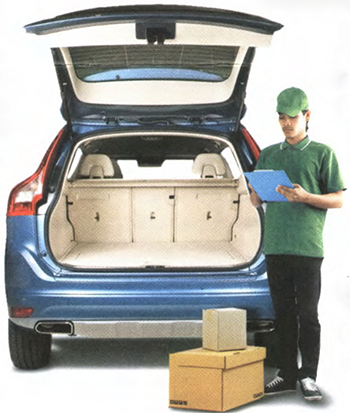Business Auto Deductions

If you drive your car for business purposes, the costs of operating and maintaining your vehicle are potentially deductible. Here are some guidelines.
 Two Methods
Two Methods
The IRS provides two basic methods for computing deductions for the business use of an automobile.
Actual expense method.
With the actual expense method, you deduct the actual costs of operation and ownership, including licenses, registration fees, garage rent, repairs, gas, oil, tolls, and insurance. Additionally, you may claim depreciation deductions if you own the car or your lease payments if the car is leased. Owners may be able to elect expensing under Section 179; however, restrictions apply.
Standard mileage rate.
Alternatively, you may choose to use an IRS-provided standard mileage rate. With this method, you multiply the number of business nUles you drive during the year by the applicablc rate (5:3.5¢ per mile for 201 7). When you use the standard mileage rate, you don't separately deduct expenses such as gasoline, oil, insurance, repairs and maintenance, depreciation, or lease payrnents.
Which Should You Use?
If your vehicle is costly to own and operate, the actual expense met hod may be more advantageous. Conversely, if your vehicle is fuel efficient anll/or inexpensive, the simpler standard mileage rate method may be a better choice.
With either method, the ms requires that you keep records that subst.antiat.e your business use of the car: the date, place, business purpose, and number of miles you traveL \Vhen you USf' the actual expense method, you'll also need records substant.iating the amount and date of car-related expenditures.
If you decide to use the standard mileage rate for a car you own, you may switch to dedur:ting your actual business-related car expenses in a later year. However, you won't be able to claim accelerated depreciation neductions for lhe car. With a leased car, you have less flexibility. If you choose the standard mileage rate the first year, you must use it for the entire lease period.
Personal and Business Use
If you use your car for both personal and business purposes, you must keep track of your mileage for each purpose. To figure the percentage of qualified business use, divide the business mileage by the total mileage driven and then multiply that percentage by your total expenses .
Day Camp Expenses
When all requirements are met, employed and self-employed, parents Illay claim a fpderal income tax credit for a portion of their child care expenses. All hough parents typically e1aim the credit for day care and preschool expensces, the credit may also be available for summer day camp expenses.
For 2017, the child and dependent care credit is calculated by multiplying the amount of qualifying expenses (up to $3000) for the care of one individual or up to $6000 for the care of two or more) by an applicable percentage (betweell 20% and 35%, based on income). Children must be under age 13 willie anending camp, and other rest rictions may apply.
Note that the costs of over night camp are excluded from the definition of "employment-related expenses" that can qualify for the credit.


